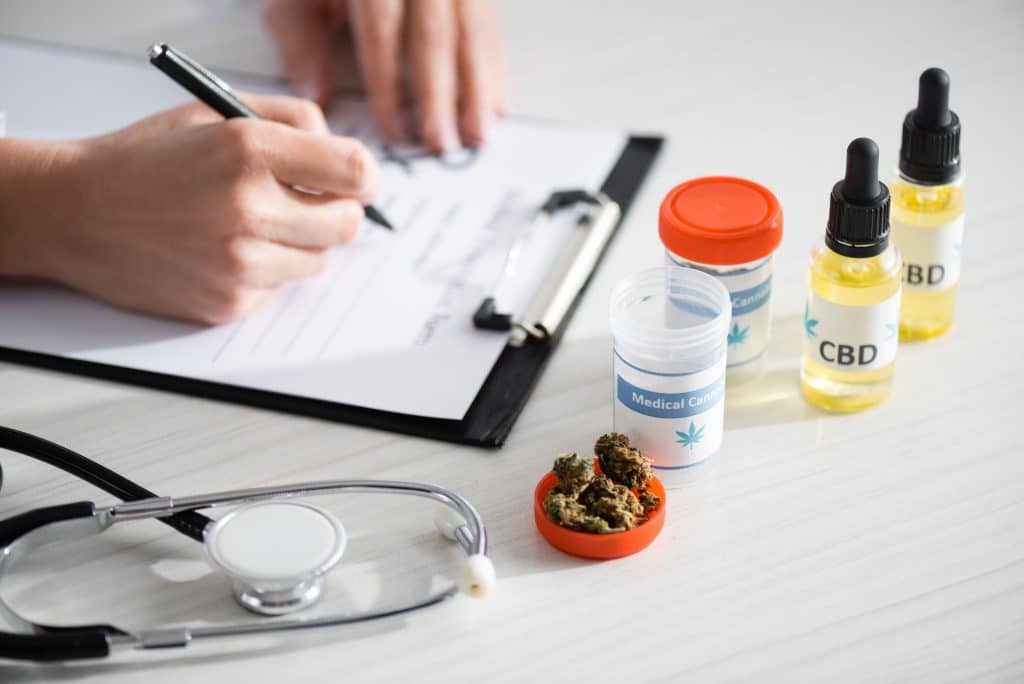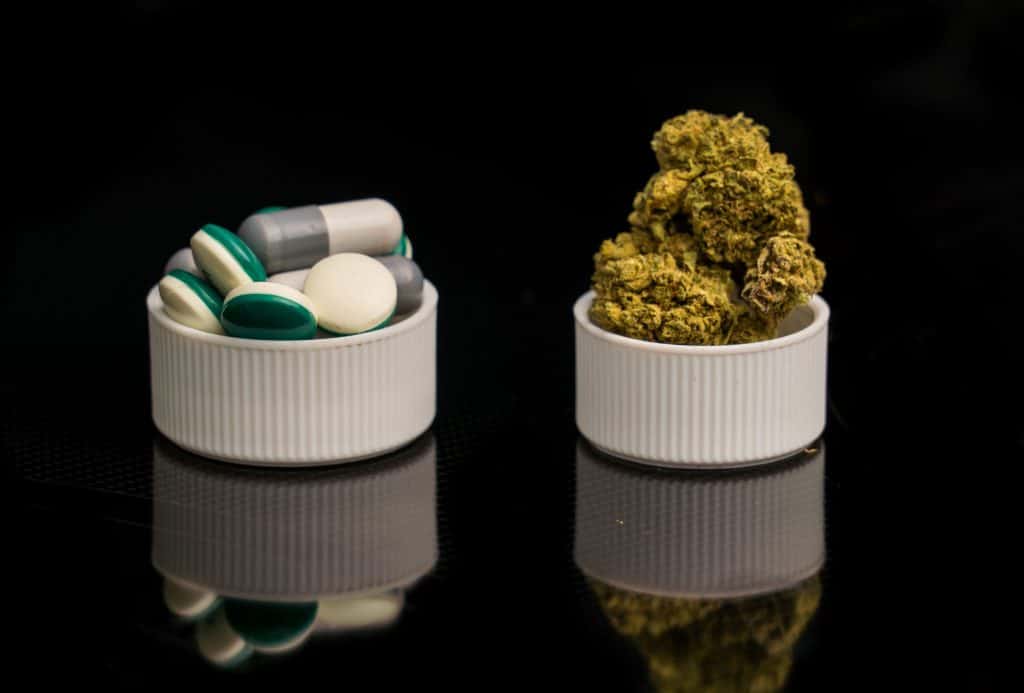There are different pain options out there, though the big issue right now is the growing opioid epidemic. Counter to this, an entire ketamine industry is flourishing in the gray market to help people deal with their pain (among other issues). And another front-runner in this battle is medical cannabis. In a recent study, it was found that medical cannabis use brought down opioid (and other medication) use in participants, in 79% of the population studied.
Details of the study
Published earlier this year, the study Medical Cannabis Patients Report Improvements in Health Functioning and Reductions in Opiate Use looks at self-reporting of pain patients to establish the effects that medical cannabis has on other pain medication-taking. According to the research team, “The purpose of this cross-sectional observational study was to identify and report on the characteristics, ailments, and medical cannabis usage of Florida medical cannabis patients, as well as their perceptions of pain medication use and health functioning after legalized access to medical cannabis.”
Investigators looked at it from a few different standpoints, “(1) characterize the demographics and use patterns of participants who had physician-approved medical cannabis access, (2) to provide information on patient perceptions of changes in health functioning after initiation of medical cannabis use and (3) examine participant perceptions of the effects of medical cannabis access on their use of OBPM (opioid based pain medication)”

In order to do this, researchers recruited 2,183 patients from medical dispensaries across Florida, and administered a questionnaire of 66 questions. The survey took into account demographics, health of participants, current use of medicines, “along with items from the Medical Outcomes Survey (SF-36) to assess health functioning before and after cannabis initiation.”
95% of participants were between the ages of 20-70 years of age. The majority were female at over 54%, 85% were white, and only 47% were employed. ~61% reported that prior to using medical cannabis, they were using other pain medications. All participants were in fact registered medical marijuana users in the state of Florida.
The majority, 79%, claimed a reduction in other medication usage, or completely stopping other medications. 11.47% reported improved functionality. Of the people in the study, 49.92% had complaints of both pain and some form of mental health issue, while just over 9% were solely concerned about pain.
Thanks for keeping up with us. Stay up-to-date by signing up for the Cannadelics Weekly Newsletter, and also take advantage of tons of deals on cannabis flowers, vapes, edibles, smoking devices, cannabinoid compounds, and lots more. Have a blast and get blasted…responsibly.
How did these people use their medical cannabis?
When looking at self-report studies, it means there isn’t a specific testing regime. In some studies, participants are given a specific amount of a specific medication. Or their behaviors are watched within a lab setting. In a self-report study, it’s more about investigators essentially taking a look at what people are doing outside of a lab setting. This means there can be great diversity in behavior, even when its about the same thing.
Researchers found that participants all used medical cannabis in their own ways, though the majority did use it daily. 54.99% not only used it daily, but used it many times throughout the day. A smaller 24.55% used it daily, but not as frequently throughout the day; 9.72% used daily, but only 1-2 times per day; and 8.66% used it daily, but only in the evenings. In terms of how necessary they saw their own use, 60.60% thought they had it right on the nose; while 7.21% thought they might be overusing a bit. 12.22% thought they could possibly use an increase.
In terms of how long these participants had been medical marijuana patients, a small number were long time users of 10 years or more – 7.86%, though the majority had used for less time. 65.10% had used it for one year or less, and 20.99% had been using it for 1-3 years. 90.59% reported medical cannabis as positively effecting their ailments. Less than 2% of participants reported it either didn’t work well, or it didn’t work at all. 88.67% put a high importance on medical cannabis for their quality of life.
Since researchers wanted to compare how life was before and after initiation of medical cannabis, they assessed health functioning and limitations from health issues, prior to starting and after starting. The largest responding group said they improved, or stayed the same (due to a disability). Although some did report the lack of improvement, at no point was it ever a majority that a symptom worsened, although in some cases, this was indeed reported.
Categories where there was a lot of improvement, included ‘physical functioning’, ‘bodily pain’, and ‘social functioning’. After analysis, all categories “indicated significant differences after initiation of medical cannabis use, with all health functioning domain scores showing significant improvement.”
Did medical cannabis really help decrease opioid usage?
At a time when opioid use and overdose deaths are out-of-control, it becomes extremely important for pain patients to have options that are less likely to get them addicted, or result in an overdose death. In 2021 alone, the CDC reported preliminary numbers that put the drug overdose rate at about 107,000. Though this accounts for all drug classes, we know that the grand majority were likely opioid-related. We know this because of the over 93,000 deaths in 2020, over 68,000 were from opioids, and of the ~73,000 overdose deaths of 2019, about 48,000 were synthetic opioid-related. So it stands to reason that a pretty large chunk of the most recent number, is also due to opioids.

At the crux of this issue is a system that continues to allow the problem to fester. Not only has the government done nothing to stop this industry, it continues to promote it through regulation. In fact, earlier this year it proposed to loosen guidelines for prescribing, rather than tighten them; though it should be mentioned that these guidelines have no legal value to begin with. As this is a case of the doctor being the dealer, it makes it that much harder to treat, since the very doctors expected to be looking out for patients, aren’t. And this makes the application of other options, like medical cannabis, not just important, but extremely necessary.
So what did this study turn up in terms of the ability to get patients to use less opioids and other standard pain medications? Prior to medical cannabis initiation, 36.82% were using hydrocodone-acetaminophen; 26.78% were on oxycodone-acetaminophen; and 10-20% reported use of oxycodone, hydrocodone, and codeine by themselves. After medical marijuana use started, the number of patients using opioid medications dropped to under 7.5%.
The medications that had been used the most, were reduced a much as 5X. For example, those using hydrocodone-acetaminophen went down to 7.31% from the original 26.78%, while use of oxycodone-acetaminophen, went down to 4.78%.
Analyses showed that not only were less people using, but they were also using less. As per researchers, “The paired t-tests also showed the same pattern, the mean number of uses for each medication after medical cannabis initiation was significantly lower than before, and the same finding was seen for the mean of the total number of different medications.” They continued, “The average number of those who reported using none of the listed medications was also significantly higher than before.”
So, 60.98% reported using opioids before starting medical cannabis. 70.54% of that number had been on such medications for two or more years before initiating medical cannabis treatments. 93.36% of the previous opioid users reported some sort of change to their standard medication regimens once starting medical cannabis. A majority of 79.25% reported that they substantially reduced the amount of medications taken, or stopped all other medications entirely. 11.47% said they functioned better because of being able to decrease their opioid usage.
While its not a huge percent, it is of note that 2.71% said they stopped all other pain and psychiatric medications. Only 1.77% simply added on the medical cannabis without making other changes. And whereas 4.80% couldn’t be categorized, no one indicated a greater use of other medications after beginning medical cannabis treatments.
Conclusion
This is not the biggest study out there, but the results are rather profound, especially if similar investigations can turn up similar results. The most interesting aspect of a study like this, is that it shows how much patients want to make changes, especially in the way of getting away from more harmful medications.
However, this understanding does come with the caveat that all these participants were looking for another option. They were found in medical dispensaries, after all. It could be that such a population represents the people that medical cannabis can help, while cutting out those who didn’t have as good of an experience and didn’t return to the dispensary for more medication. To know more, we need more research. For now, however, a study like this provides a strong indication that medical cannabis can greatly help those in pain, and that it can help to steer people away from the opioid drugs claiming so many lives.
Hey readers!! Thanks for dropping by Cannadelics.com; where we work hard to get you the best in cannabis and psychedelics news reporting, every day. Chill out with us regularly to keep informed on everything going down, and subscribe to the Cannadelics Weekly Newsletter, so you’re never late on getting a story.
The post Study: Medical Cannabis Brought Down Opioid Use in 79% appeared first on Cannadelics.
Via https://cannadelics.com/2022/11/09/study-medical-cannabis-brought-down-opioid-use-in-79/
source https://rosalinaklerkx.weebly.com/blog/study-medical-cannabis-brought-down-opioid-use-in-79
No comments:
Post a Comment